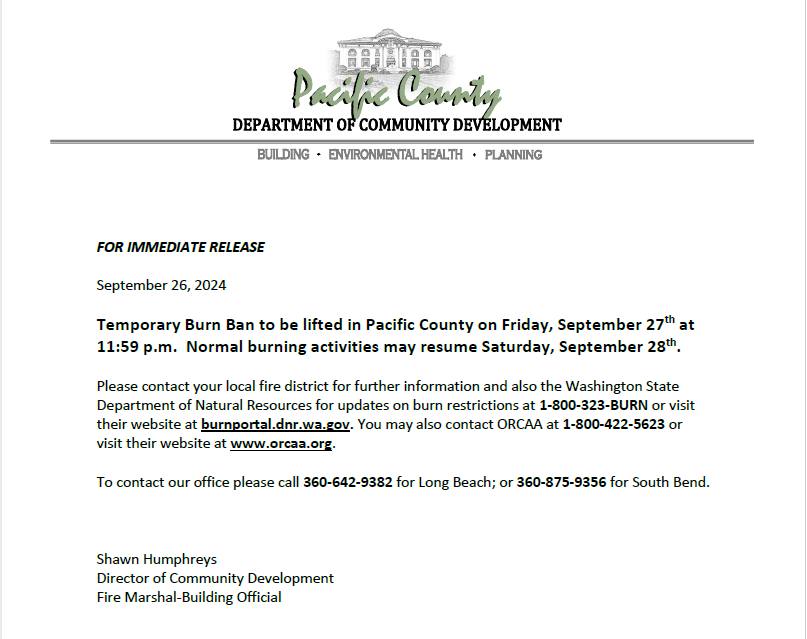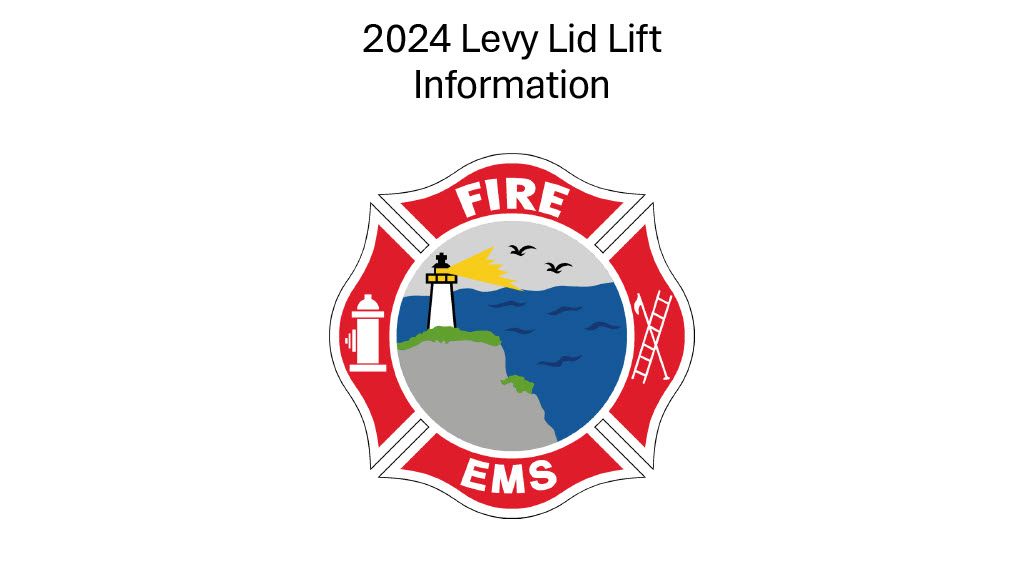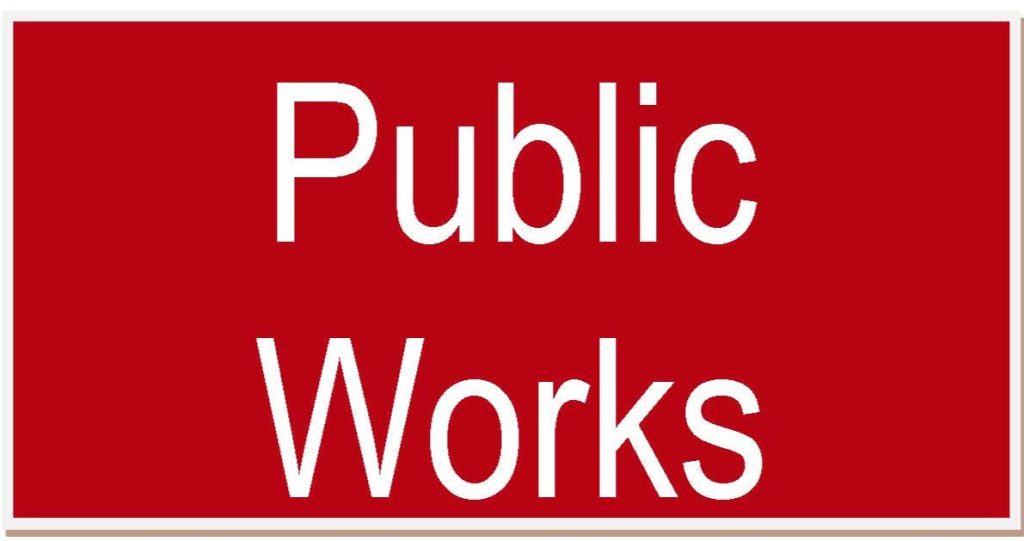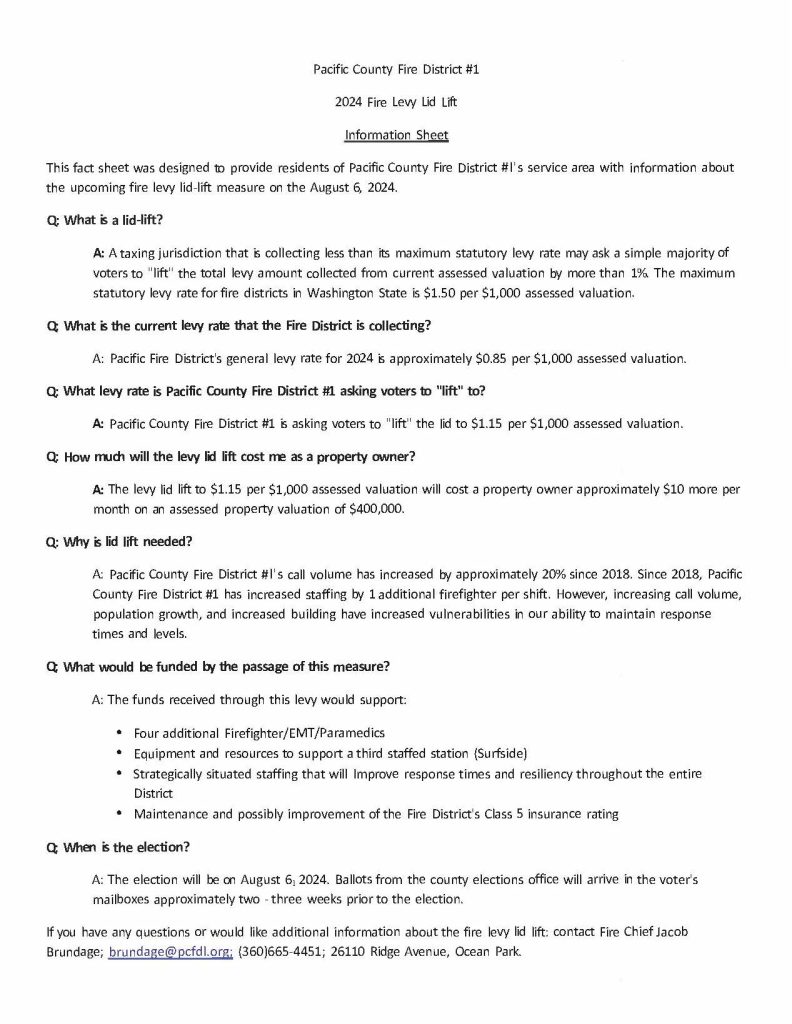PACIFIC COUNTY FIRE DISTRICT #1
Quick Links
Safety
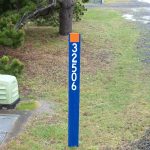
Address Sign
Address Sign Post
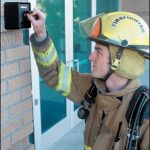
Lock Box
Lock Box
General Information
Pacific County Fire District #1 is asking voters to increase the current levy rate from $0.85 per $1,000 assessed property value to $1.15 per $1,000 assessed property value.
If approved, the increased cost to a property owner is approximately $10 more per month on a property assessed at $400,000.
New funds will be used to increase daily staffing, including staffing the Surfside fire station.
The proposed lid-lift measure will be on the August 6, 2024 ballot
Pacific County Fire Protection District 1 was officially formed on October 7, 1940. It is a progressive, full-service fire district providing fire suppression, emergency medical services, ALS and BLS emergency transport services, and public safety education.
Pacific County Fire Protection District 1 serves unincorporated areas of the Long Beach Peninsula including the State Parks, and the communities of Seaview, Klipsan, Ocean Park, Nahcotta, Oysterville, and Surfside.


